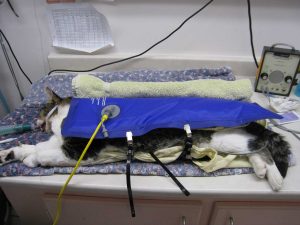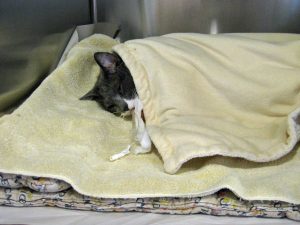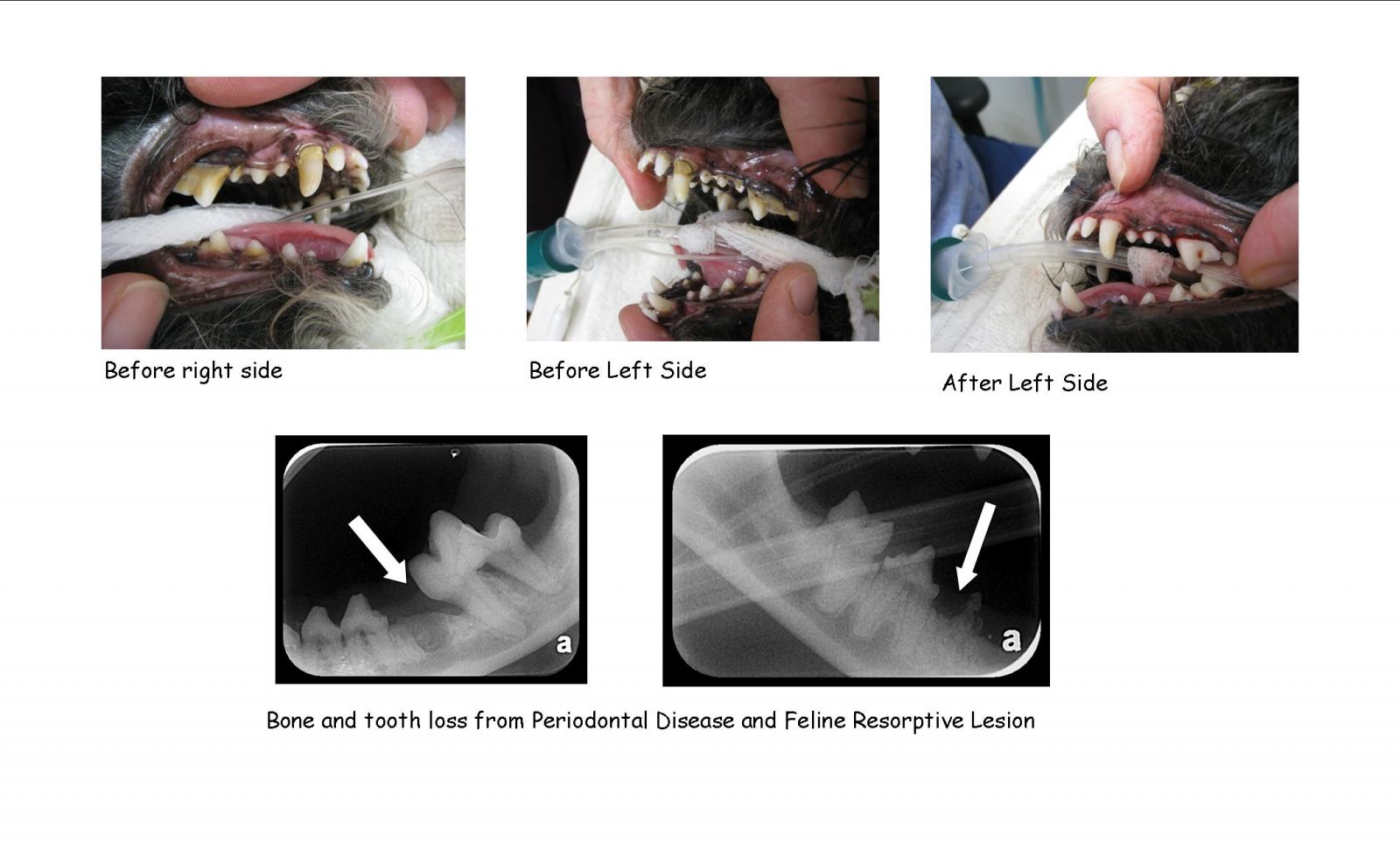
Brantford Veterinary Clinic Tech Talk
In the Brantford Veterinary Clinic your pet’s care and comfort is of the utmost importance. This is our HOT DOG warming blanket used to keep him or her warm and cozy during surgery . We use it on every patient who is undergoing an anesthetic procedure, no matter what type or length of anesthesia. It is called a HOT DOG warming blanket because (as you can see) it wraps around the animal much like a hot dog bun would. It is portable and therefore can be used anywhere in the clinic when needed. It comes with two different sizes of blanket to ensure the best fit for your pet. Having three different temperature levels to choose from allows us to adjust the warming blanket as needed while continually monitoring your pet’s body temperature with a thermometer throughout the procedure. A normal, healthy dog should have a body temperature between 37.5°C and 39.5°C. A normal, healthy cat should have a body temperature between 38°C and 39.5°C. Maintaining the correct body temperature while under anesthesia is very important, especially in younger animals like puppies and kittens. While under anesthesia, animals lose their ability to control their body temperature through shivering or panting. With this in mind, the animals require some sort of intervention from us to prevent them from becoming hypothermic. The HOT DOG warming blanket allows their body temperature to remain at the optimum level and therefore allow normal metabolic functions and provide an even safer anesthetic with a smooth and more rapid recovery.
. We use it on every patient who is undergoing an anesthetic procedure, no matter what type or length of anesthesia. It is called a HOT DOG warming blanket because (as you can see) it wraps around the animal much like a hot dog bun would. It is portable and therefore can be used anywhere in the clinic when needed. It comes with two different sizes of blanket to ensure the best fit for your pet. Having three different temperature levels to choose from allows us to adjust the warming blanket as needed while continually monitoring your pet’s body temperature with a thermometer throughout the procedure. A normal, healthy dog should have a body temperature between 37.5°C and 39.5°C. A normal, healthy cat should have a body temperature between 38°C and 39.5°C. Maintaining the correct body temperature while under anesthesia is very important, especially in younger animals like puppies and kittens. While under anesthesia, animals lose their ability to control their body temperature through shivering or panting. With this in mind, the animals require some sort of intervention from us to prevent them from becoming hypothermic. The HOT DOG warming blanket allows their body temperature to remain at the optimum level and therefore allow normal metabolic functions and provide an even safer anesthetic with a smooth and more rapid recovery.
When your dog or cat has finished in surgery, we move them to a kennel which we line with blankets and towel wrapped hot packs to keep them warm and comfortable. A technician monitors them until they are fully awake.






